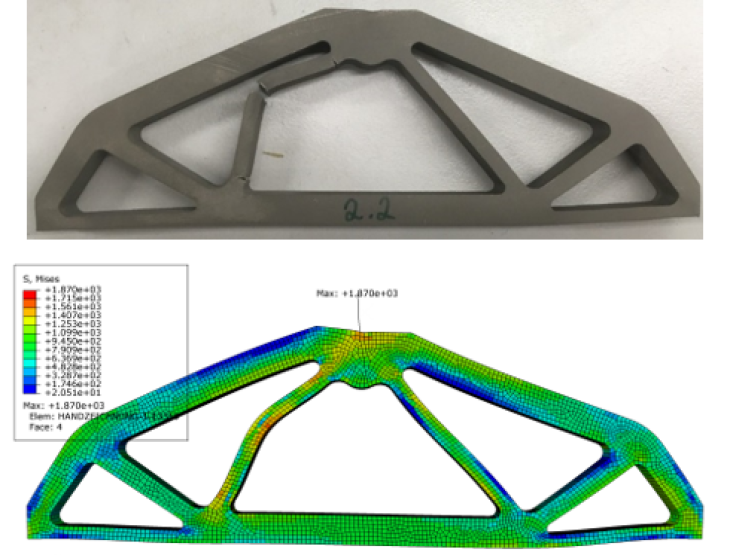Determination of the scatter and validation of probabilistic analyses of topologically optimized, additively manufactured titan structures
- Project duration 07/2019 - 07/2020
- Project partner 1 Prof. Benedikt Kriegesmann, Working Group Structural optimization for lightweight design (SOL) of Technischen Universität Hamburg (TUHH)
- Project partner 2 Dr. Josephin Enz, Group Leader Characterisation of Additive Laser Manufactured Structures (CALMS), Department Laser Processing and Structural Assessment at Helmholtz-Zentrum Geesthacht (HZG)

Figure: A tested beam structure after a 3-point bending test (top) and finite element simulation with stress distribution (bottom) Photo: TUHH/Kriegesmann
The properties of additively manufactured structures scatter. For the design of these structures, the scatter of material properties, geometry and residual stress is accounted for by safety factors. Alternatively, the influence of scattering parameters can be accounted for by probabilistic analyses, which allow a less conservative design. Embedding probabilistic methods into design optimizations of additively manufactured parts provides designs that are less sensitive with respect to scattering parameters. This requires a validated, deterministic model (e.g. finite element model) as well as a validated probabilistic method, which demonstrably are able to determine the distribution of a structural response (e.g. part stiffness and strength).
Within the project, it has been demonstrated that the distribution of stiffness and strength of an additively manufactured part can be predicted. For that, a sample of a topologically optimized structure was manufactured, measured, tested and analyzed. The scattering parameters like the geometry and material properties were treated as random parameter in simulations and thereby, the distribution of the collapse load was predicted. Though the experimentally and numerically determined distribution compare well, a number of questions arose that will be tackled in a subsequent project.

